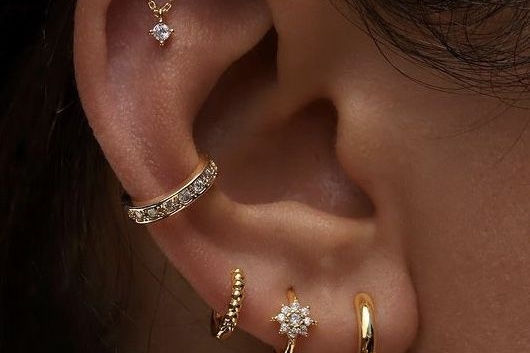Getting a piercing can be a bold way to express your personality and style. From classic ear piercings to trendy nose, belly, or even cartilage options, piercings have become a common fashion statement. However, before you take the plunge, there are a few important things to consider to ensure the process is safe, hygienic, and well thought-out.
1. Choose a professional piercer
Never get pierced by someone who is not trained or licensed. Always visit a professional studio with good reviews, proper certification, and strict hygiene standards. A professional piercer uses sterilised equipment and follows safety protocols, reducing the risk of infections and complications.
2. Research the type of piercing you want
Each piercing has its own level of pain, healing time, and aftercare routine. For example, an earlobe piercing heals faster than a cartilage or belly button piercing. Researching in advance helps you understand what to expect and how to care for it properly.
3. Check for allergies
Some people are allergic to certain metals, especially nickel. To avoid allergic reactions, opt for high-quality jewellery made from titanium, surgical steel, or 14-karat gold. It might cost a bit more, but your skin will thank you.
4. Make sure the environment is clean
Before your piercing begins, take a look around the studio. It should be tidy, well-lit, and smell clean. The piercer should wear gloves, open new needles from sealed packages, and use sanitised tools. If anything feels off, it is perfectly fine to walk away.
5. Prepare for some discomfort
All piercings come with a bit of pain, though it varies from person to person. The sensation is usually quick but can be followed by mild swelling or tenderness. Avoid taking painkillers like aspirin before your appointment, as they can thin your blood and cause more bleeding.
6. Follow aftercare instructions carefully
Proper aftercare is crucial for healing. Your piercer will likely advise you to clean the area twice a day with a saline solution and avoid touching or twisting the jewellery. Refrain from swimming, applying heavy lotions, or using alcohol-based products on the piercing.
7. Be patient with healing
Healing time depends on the location of your piercing. Earlobes may heal in a few weeks, while others like cartilage or navel piercings, can take several months. Resist the temptation to change your jewellery too soon, as it can lead to infections or irritation.
8. Know the risks
Piercings carry potential risks such as infections, scarring, or keloids. Always be alert to unusual redness, discharge, or persistent pain. If you suspect an infection, seek medical help promptly.
9. Think about your lifestyle
If you play sports, wear helmets, or work in an environment where piercings might snag or get irritated, plan accordingly. Some workplaces or schools may also have policies restricting visible piercings, so it is best to check first.
10. Listen to your body
Ultimately, your body will tell you how well it is adjusting to a piercing. If you feel pain that does not subside, or if the area looks inflamed, remove the jewellery and seek professional advice.
A piercing can be a beautiful form of self-expression. Taking the time to prepare, research, and follow the right aftercare steps can make all the difference between a stunning accessory and a painful regret.


